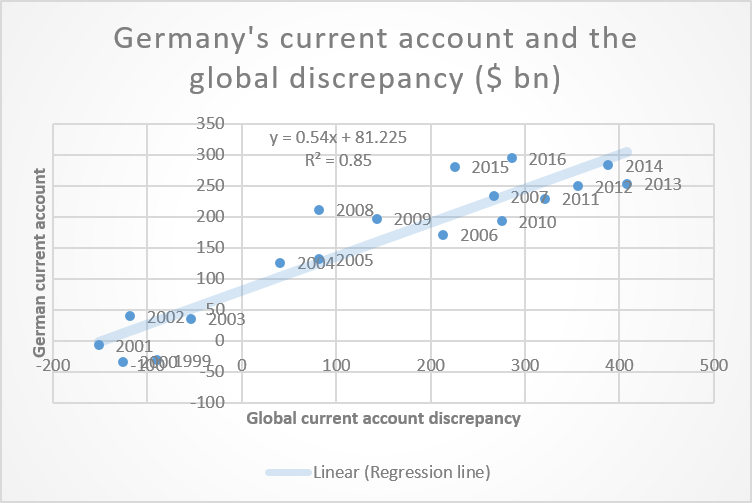
Is Germany’s Current Account Surplus Bad for the World Economy?
The lead story in the Economist (8 July 2017) “Why the German current-account surplus is bad for the world economy” starts from the assumption that the rest of the world would benefit if Germany were to spend more. This holds true only in a world that is constrained by demand. But this is less and less the case since the global output gap has already fallen below 0.5% (of potential output) and is projected to disappear within a year or two. Under these conditions, the German current account surplus, which amounts to 0.33% of global output, cannot do a lot of damage to the global economy.
Your leader also mentions, en passant, that a number of smaller Northern European nations run large surpluses as well. The sum of the surpluses of these countries, at about $230 billion, is actually similar to that of Germany. These countries together thus do as much damage as Germany. Their surpluses (those of The Netherlands, Denmark, Sweden, Switzerland and Norway) hold a wider lesson: the attempt to pin underspending on some ‘Germanic’ features might be misleading.
For example, ‘angst’ as a key factor for low spending and wages. But this should apply also to the other smaller Northern European surplus countries. Are the Scandinavians and the Swiss all gripped by collective ‘angst’?
Manufacturing strength as a cause of surpluses is another factor that fails to stand up to scrutiny. Among the other surplus countries in Northern Europe one finds Sweden or Switzerland, whose current account surplus is even larger than that of Germany, while the share of manufacturing in employment is much lower (close to US or UK levels).
As a curiosity, one should also note the assertion that a surplus for Germany means that other countries have to run a deficit is, statistically speaking, not correct since the rest of the world is in rough balance (and mother earth is running a current account of about 300 billion with the rest of the universe).
The chart below shows that almost 20 years ago the sum of the world’s current account was negative and at the same time Germany’s current account was also in deficit. Since then both this so-called ‘global current account discrepancy’ and the German current account have moved into increasing surpluses. The correlation between the two is very high (85%) and statistically speaking one finds that the German current account surplus rises by one about one half (0.54) of any increase in the global discrepancy.

This suggests that a significant part of today’s global current account discrepancy might be due to a mismeasurement of the German numbers. This is a strong hint that current account numbers have to be taken with a big pinch of salt. Within the EU, and especially within the euro area, international transactions can no longer be measured with precision.
The German current account surplus is probably somewhat mis-measured; and it is not the only one in Europe. The world has more urgent problems than a group of under-spending Northern European nations.
Daniel Gros
Centre for European Policy Studies (CEPS), Brussels
Gros, Daniel, "Is Germany’s current account surplus bad for the world economy?", EconPol Europe Opinion, 7 August 2017.